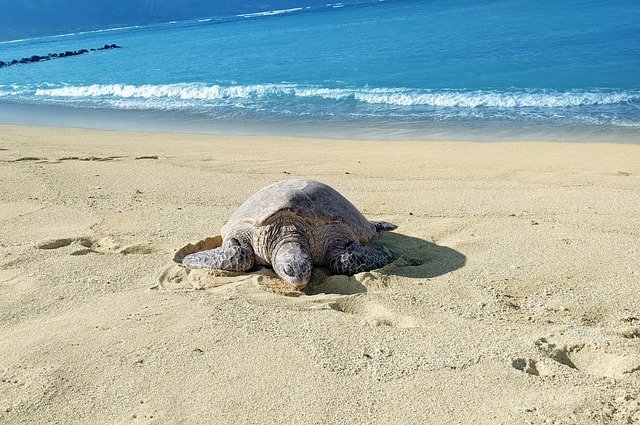
Hello friends Lakshmi..
Procedures for Turtle Laying Eggs
Turtles are one of the reptiles that live in sea waters and beaches. The process of turtle laying eggs is a natural activity that is interesting to study. The following are general procedures carried out by turtles during the egg-laying process:
1. Selection of Laying Locations
Female turtles usually return to the beach where they hatched to lay their eggs. The laying location is chosen very carefully because it has a big influence on the safety of the eggs that will be laid. Turtles tend to choose beaches that have fine sand, are easy to dig, and are far from human disturbance.
2. Nest Excavation
After choosing the right location, the female turtle begins to dig a hole in the sand using her strong feet. This process is usually carried out at night to avoid exposure to excessive heat during the day. The hole or nest dug can reach a depth of around 50 to 60 cm depending on the turtle species.
3. Laying Eggs
Once the hole is ready, the female turtle begins to carefully lay her eggs into the nest that has been dug. Turtles can lay tens to hundreds of eggs, depending on the species. The egg laying process usually takes about one to two hours.
4. Nest Closure
After the eggs are laid, the female turtle closes the nest again by covering it with sand using her feet. The process of closing the nest is important to protect the eggs from predators and also so that the temperature in the nest remains stable.
5. Return to the Sea
After completing the closure of the nest, the female turtle returns to the sea. This process is usually carried out at night to reduce the risk of being hit by predators on the beach. After laying eggs, the female turtle will leave the nest and no longer care for her eggs.
6. Egg Development
Turtle eggs will undergo an incubation process in the nest for several weeks to several months depending on the temperature of the surrounding environment. Higher temperatures usually speed up the incubation process, while lower temperatures slow it down.
7. Hatching and Release of Baby Turtles
Once the incubation process is complete, the eggs hatch and the baby turtles then burrow their way to the surface to find their way to the sea. This process often occurs at night to reduce the risk from predators.
The nesting process of sea turtles is an important part of their life cycle and is very important to preserve. Threats to turtle nesting habitats such as beach destruction and human disturbance can cause significant declines in turtle populations. Therefore, protection of turtle nesting locations and conservation efforts are very necessary to maintain the sustainability of turtle populations in the wild.
Greeting to everyone.
Downvoting a post can decrease pending rewards and make it less visible. Common reasons:
Submit
Upvoted. Thank You for sending some of your rewards to @null. It will make Steem stronger.
Downvoting a post can decrease pending rewards and make it less visible. Common reasons:
Submit